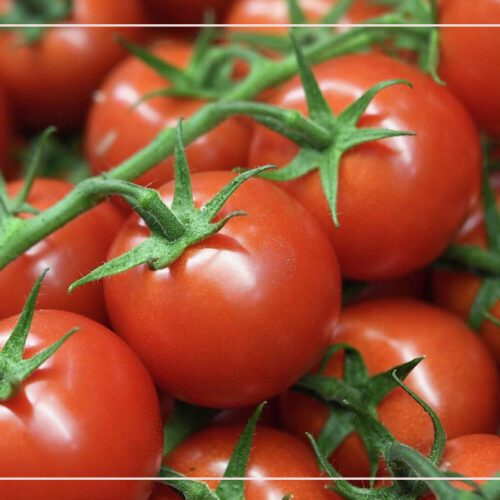
Planting in the Desert- The Art of Dryland Farming
Planting in the desert can be daunting. Dryland farming is an art that takes years of experience and knowledge to master. There are few regions on earth where less rain falls and hotter temperatures prevail than the deserts. This makes it difficult for farmers to grow crops without irrigation systems in place.
But the challenge of growing food in such a hostile environment doesn’t scare away the hardy farmer! With the right techniques, you can learn to plant crops in dry, sandy soil and reap a rich and diverse harvest.
This guide will walk you through the steps of dryland farming. You can start planting on your own land in no time. From understanding soil types to selecting suitable crops to techniques for planting and harvesting with minimal water use – we will cover it all! So get ready to learn all about dryland farming, and let’s get started!
Understanding the desert landscape
Dryland farming is an art that involves understanding the desert landscape. To plant in desert soil successfully, it’s important to factor in the environment you’re dealing with. Desert soils naturally have very low moisture content, and with little annual rainfall, these soils can be hard to work with. It’s also important to note that while there may be virtually no visible water bodies such as oceans or lakes, there is typically a large groundwater table beneath the dry soil surface.
By understanding how drought conditions affect the soil, you can create a gardening strategy that works for your garden. Drought-tolerant plants are typically used in dryland farming. They require less water and are able to store more moisture from light rains or irrigation. Encouraging deep root systems can also help plants survive during dry periods and reduce evaporation from the soil. Planting cover crops between rows of plants can also retain moisture, add organic material to the soil, and even serve as a windbreak during hot days.
What is dryland farming and how it works
Dryland farming, also known as dry farming, is an agricultural method of farming crops in desert soil. This is done by reaping multiple harvests from rain that has soaked into the soil and preserved water as a way to make use of scarce water supplies.
The process begins with planting in the fall, when there’s more moisture present in the soil. Seeds are planted in clumps and mulched—typically with hay or wheat straw—in order to retain moisture throughout the dry months. The plants grow during the winter and spring, when seasonal rains come, making it possible for them to thrive without further irrigation.
Throughout the dry season, compost is occasionally added to the field to enrich it and preserve as much water as possible. Mulching helps keep weeds down and creates a barrier for protection against hot winds during the summer months. In addition, using drip irrigation is often encouraged in areas where it’s available so that essential nutrients can be delivered directly to root systems and conserve additional water.
Types of crops for dry farming
Dryland farming is a great way to cultivate crops in the desert while minimizing water usage. But what types of crops are most suited to dry farming?
-
Vegetables
Vegetables such as tomatoes, peppers, squash, and onions can all thrive in a drought environment. These crops have deep root systems that help them survive harsher conditions and need less water to flourish.
-
Grains
Grains such as wheat, barley, rye, and oats are some of the most common crops for dryland farming. These grains are extremely hardy and require little water to thrive. In fact, some of them even require less water than vegetables!
-
Fruit Trees
Though it may initially seem strange to think of planting fruit trees in a desert climate with limited rainfall, it can be done! Fruit trees such as apples and pears are hardier than one might think and are perfect for a dry farming system. Other fruit trees that tolerate arid climates include mangoes and citrus fruits like oranges and lemons.
Dry Farming benefits
Dryland farming has a number of benefits, particularly for farmers seeking to produce high-value crops in dry and desert-like environments. By relying on natural conditions such as sun, wind, and the heat of the day to evaporate moisture, desert farmers are able to conserve water while still producing hearty crops.
The process of dryland farming also reduces soil erosion and runoff because there is less need for continual tillage or plowing. This helps maintain soil structure, particularly in arid regions where soil particles are prone to erosion.
Finally, dry farming allows for nutrient preservation within the soil. When irrigation or over-watering is used, many essential nutrients can be leached deep into the ground or out of reach. In contrast, when only limited water resources are available, essential nutrients are more likely to stay close to the roots of plants. This not only helps crops remain healthy but also reduces nutrient leaching into nearby bodies of water like rivers and lakes.
Soil amendments and irrigation for desert soil
If you’re looking to create a garden or farm in the desert, you’ll need to make a few changes to the soil and use some extra irrigation. The low-moisture desert environment means that water evaporates quickly, so you’ll need to irrigate more frequently than in wetter climates.
-
Soil amendments
Adding soil amendments such as compost and gypsum are essential for providing the soil with additional nutrients and minerals. This can help plants to grow better in dry environments. Moreover, some integrated microbial feed, such as Add Life, can be applied to improve the aeration of the soil and increase its water-holding capacity. Organic matter can also be added to the soil, helping to retain moisture and providing additional nutrients for plants.
-
Irrigation strategies
Ideally, when planting in the desert it’s best to opt for low-volume irrigation systems. A drip irrigation system or subsurface irrigation are always recommended. By using these methods, water loss from evaporation and runoff is minimized. Plus, it is delivered directly near the root zone of your plants. Additionally, these methods use less water overall than other strategies. That’s why they become a great solution for any dryland gardener!
It is also recommended to use organic products that contain Mycorrhizal Fungi, such as Rootmax Liquid, to increase root size and enhance water and nutrient uptake.
In conclusion, dryland farming offers a viable opportunity for those looking to cultivate food in desert soil. It requires specialized knowledge, careful planning, and hard work. On the other hand, the end result is a sustainable and productive agricultural practice that is both efficient and effective.
Whether you are a small, home-scale gardener or a commercial farmer, you can help to ensure long-term yields and a healthy environment. By adopting dryland farming techniques, it’s possible to minimize the risks of drought, climate change, and other environmental factors.
Related Topic
Excess Sulfur in The Soil
Common Questions
-
How do you turn bad soil into good?
Instead of relying on NPK fertilizers, the leaves should be left alone. Plus, wood chips or compost can be used for nourishment. To maintain a healthy soil environment, it is crucial to avoid activities that could harm it, such as using herbicides and mosquito sprays.
-
Which soil is best for dry farming?
Black soil is an excellent choice for dry farming. It’s preferred due to its fine-grained texture, abundant calcium content, and its ability to retain moisture. Additionally, it is sticky in nature which makes it easier to utilize and process.
-
Which plant can survive in dry environments?
There are a number of drought-tolerant plants that can be successfully grown in arid environments. For example, Coneflower (Echinacea spp.), Catmint (Nepeta x faassenii), Agastache, Lantana (Lantana camara), Lamb’s Ear (Stachys byzantina), Lavender (Lavandula angustifolia), and Salvia (Salvia spp.).





